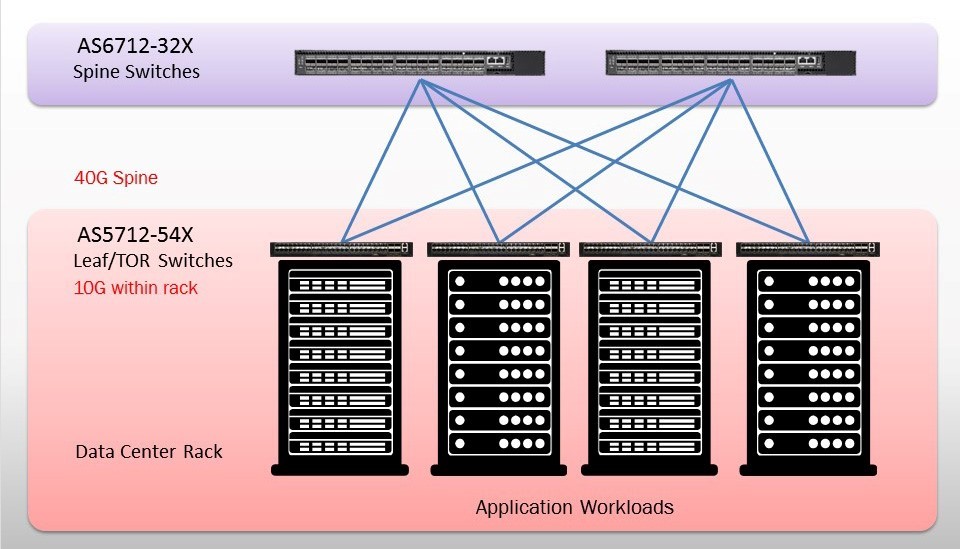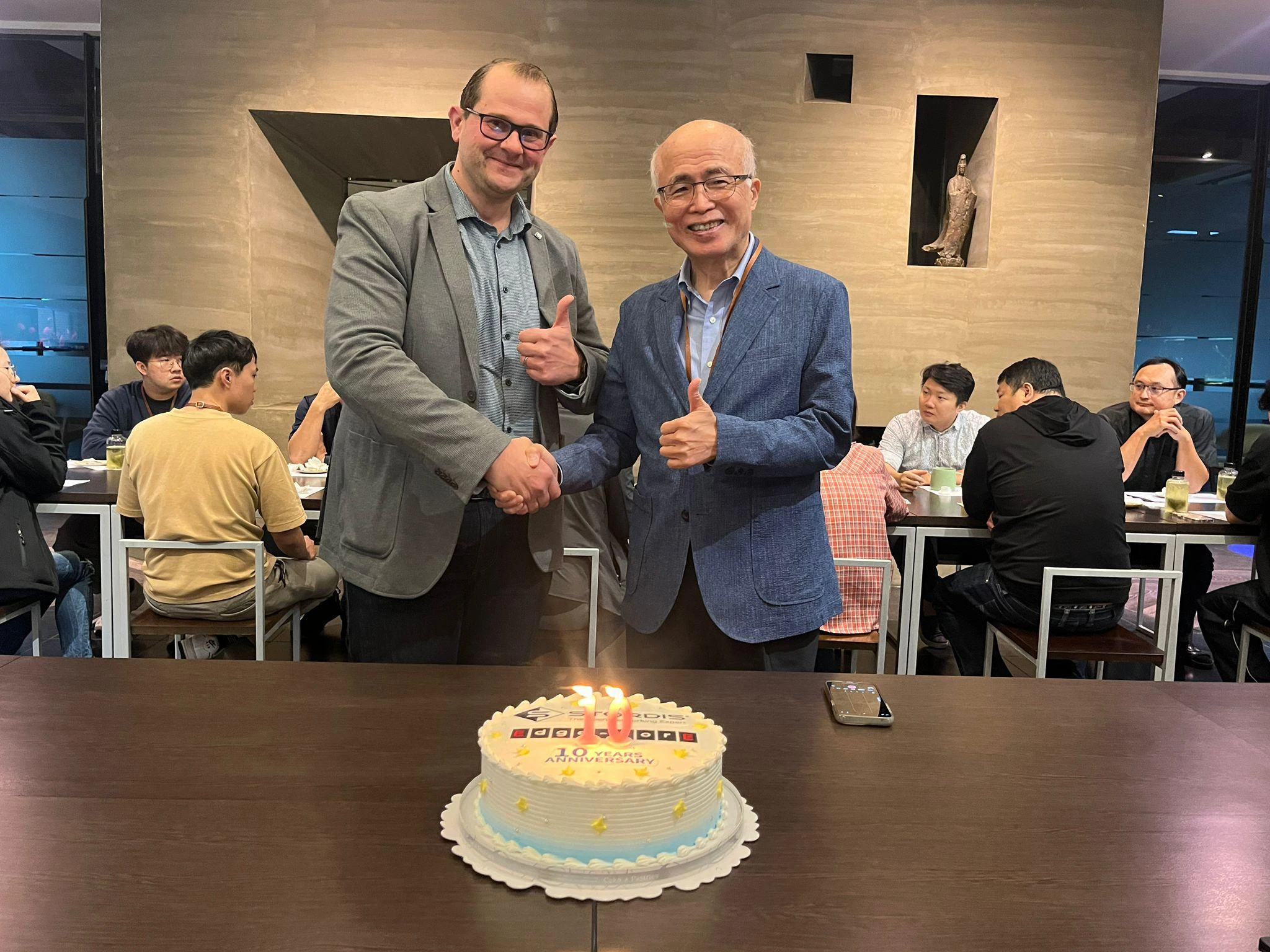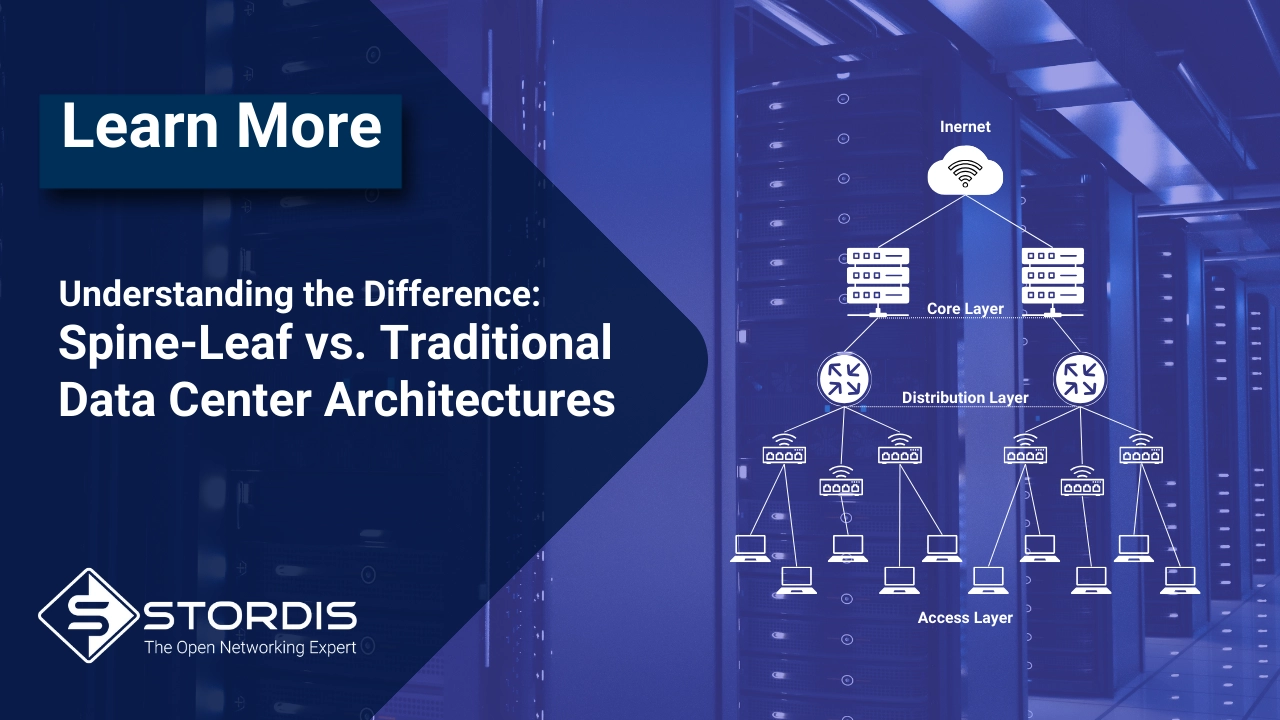- You have no items in your shopping cart
- Continue Shopping

The University of Texas at San Antonio (UTSA) operates massive workloads for large enterprises while educating its own students on cutting-edge open source technologies and providing research opportunities, all within the constraints of a tight budget.
The recently published case study shows their Cloud and Big Data Lab ecosystem leveraging Edgecore Networks 10G/40G Open Networking switches and Cumulus Linux to simplify their stack and enhance flexibility, while reducing acquisition cost and operational expenses.
Product Deployment
- 2 x AS6712-32X 40G data center switch, serving as spine switches with 40G downlinks to leaf switches
- 4 x AS5712-54X 10G data center switch, serving as leaf switches with uplinks to spine switches and downlinks to controllers and compute nodes
- Cumulus Linux operating system
Background
The University of Texas at San Antonio (UTSA) is a state research university in San Antonio, Texas, US. With over 30,000 students, it is the largest university in San Antonio. UTSA is also home to the first Open Compute Project (OCP) Certification and Solution Laboratory in North America. The laboratory serves the goal to certify Open Compute technologies and key workloads for large enterprises while educating its own students on cutting-edge open source technologies and providing research opportunities.
As a rapidly evolving environment, the data center of UTSA must grow at a rapid pace while enabling research projects based on the latest technologies, within the constraints of a tight budget.

Solution
UTSA leverages OCP networking technologies with Cumulus Linux in the UTSA Cloud and Big Data Laboratory and in various cloud projects for research and education. Over 90% of server ports are based on OCP technology. Now, two thirds of the network infrastructure is based on OCP networking with AS6712-32X 32-port 40G switches and AS5712-54X 48-port 10G & 6-port 40G switches from Edgecore Networks
As the first OCP-approved 10G/40G switches, Edgecore open networking switches with pre-loaded ONIE enable different network operating systems to easily run on top of the Edgecore hardware, disaggregating the models with ONIE and Cumulus Linux. This disaggregation gives power back to users, with Linux as the network OS and the server OS.
The disaggregation goes one step further with Cumulus Linux: As a native linux network OS, it supports both networking and a range of widely available server packages, mostly open source. Switching from the world of various network operating systems, the team rapidly felt comfortable with Linux, a familiar tool. With Cumulus Linux, the switch is just another server with many accelerated ports; the administrator only needs to understand Linux. Since UTSA computer science graduates are skilled in UNIX/Linux, adoption was easy once they complete the program.
By leveraging Edgecore Open Networking technologies with Cumulus Linux, UTSA achieved simplified their stack and got flexibility that resulted in reducing both CapEx and OpEx.
[av_one_half first av_uid=’av-17xhyw6′]
Edgecore AS6712-32X
- Spine switch supporting 10G or 40G spine interconnects
- 32 fixed x 40 GbE QSFP+ switch ports in compact 1RU form factor
- Full line-rate Layer 2 or Layer 3 forwarding of 2.56 Tbps full duplex
[/av_one_half]
[av_one_half av_uid=’av-uf9952′]
Edgecore AS5712-54X
- 10G Top-of-Rack Switch for enterprise and cloud data centers
- VXLAN and NVGRE tunneling support in hardware for network virtualization
- Full line-rate Layer 2 or Layer 3 forwarding of 1.44 Tbps full duplex
[/av_one_half]
Curious about how you can benefit from Opent Networking solutions as well? Get in touch with us and we will show you how.
Disclaimer: Please note that this case study is not the property of STORDIS and we are therefore not responsible if information made available in this case study is not accurate, complete or current. STORDIS was not involved in the production of this case study. The case study was published by Edgecore Networks. A more detailed description can be found here.

Anna Leończuk holds the position of Marketing & Visibility Director at STORDIS, drawing from over 15 years of rich experience in marketing and sales. Beyond her digital marketing proficiency, she’s a passionate advocate for technology and AI, demonstrating a deep appreciation for the transformative power of these cutting-edge fields.
Comments
You might be interested in







